 Logo handmade by Bannister
Column by Scott Green
Logo handmade by Bannister
Column by Scott Green
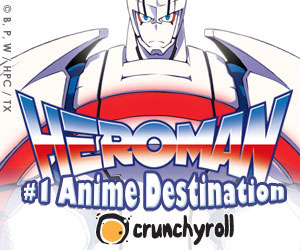
Anime Spotlight: Heroman Based on Episodes 1-4 Streaming on Crunchyroll
Stan Lee, the creator (or co-creator) of many of Marvel’s best known characters (Spider-Man, Fantastic Four, Hulk, Iron Man, Thor, X-Men, Daredevil, Doctor Strange) recently launched two anime/manga heroes. There's Heroman, with a manga series with by Tamon Ooda, serialized in Square Enix's Shonen Gangan (home of Soul Eater and Fullmetal Alchemist), and an anime from BONES (Fullmetal Alchemist, the Cowboy Bebop movie). And, there's Karakuridoji Ultimo, with art by Shaman King's Hiroyuki Takei, serialized in Jump SQ.II (and Shonen Jump in the US). The latter is surprisingly Japanese. The former is absurdly American. As a police offers cheers at the arrival of the military during an episode of Heroman "America Banzai!" Go Nagai and Ken Ishikawa's Getter Robo, credited as the first combining giant robot, featured Jack King and his American giant robot Texas Mack, which was basically Nagai's earlier Mazinger with flying cowboy hat rather than a crown capping the mech's head and robot horse Pasture King rather than Scrander wings. These laughable caricatures appeared in earlier versions of Getter Robo, but the beloved incarnation of "yea hah-ing" gun nut Jack King and his duster clad Texas Mack turn up in the unlicensed 2000 revival Shin Getter Robo vs Neo Getter Robo. Following eons hiding under the earth, the Dinosaur Empire invades the surface, launching an attack against America. After agitating the Getter Robo team with some racist comments ("pocket monkey" being the memorable one) to which even his sister rolls her eyes, Jack King engages the dinos, firing off a giant revolver, crushing cars with his discard shell casings, pulling a Django style coffin out from its hiding place under the Washington Monument, and ultimately blasting things with what counts for a giant gun among giant robots. Heroman is basically Texas Mack, the adolescent years.Based in the sunny California-esque locale of Center City, hard luck orphan Joey Jones lives with his rock loving grandmother, supporting the pair by working in a burger joint (hamburgers are ubiquitous in this anime) and dreaming of being a hero. One day Heroman's Flash Thompson equivalent and the rich kids who bully Joey crashed their expansive remote controlled toy robot. Joey takes the shattered 10 inch metal men home and lovingly begins to restore the figure. Unfortunately/fortunately, Joey leaves the toy on a chair directly under an open window while off at work. As the sky opens up with rain, Joey rushes home just in time to see a bolt of lightning strike the metal man. Mysteriously, the robot's remote control binds to Joey's arm, forming a control unit not unlike a Yu-Gi-Oh deck. The robot grows into a ceiling scraping star spangled hulk just in time for Joey and the newly dubbed Heroman robot to run into the street, saving Joey's cheerleader girlfriend Lina and her father from a highway pile-up. But soon Joey, Lina and in fact the rest of humanity is in danger from an invasion of the insectoid Skrugg aliens. Joey might be prone to self doubt, but he also displays an antithetical attitude to "mustn't run away" Shinji Ikari. While Heroman projects a shield around Joey, the boy insists on running to protect Lina and dashing alongside his robot. Accentuated by his slight, feminine even look, the character is the quintessential Stan Lee hero... an underdog who dedicates himself to the heroic endeavor. Robots, and giant robots specifically have had a long history in boy's action stories. In Japan, they were seen in the dramatically narrated illustrated stories, kamishibai well before World War 2. In that context, they were often the controlled servants of an adversary. In 1956 , as manga was taking off in the years of post war reconstruction, Mitsuteru Yokoyama flipped the script with the steel titan Tetsujin 28 (localized as Gigantor). In the story, the robot was a weapon of war, but its moral bearing was more ambiguous. Partnered with boy detective Shoutarou Kaneda, it became a tool for justice and a heroic partner. Heroman is a clear descendant of Tetsujin 28, not just because all heroic giant robots are, and not just because he's a remote controlled partner rather than piloted armor. Red, white and blue, American/super hero trappings or not, he appears to be a dangerous tool. While not spelled out, there's the sense that it could be used for good or evil, as it waits for its controllers projected morality. He rips out the ground as he runs. He violently smashes foes, turning lumbering bugmen into inanimate thoraxes with his fists. Beyond the brutality, what really sells this notion of mechanical power is that Heroman doesn't speak, but is audibly present thanks to the thudding as he trods forward. Against bug aliens that arrive in flying saucers, blitz the human military, toss cars at folks and demand earth's surrender, this is broad, unselfconsciously rudimentary stuff. There are tropes here that popular sci-fi has been doing almost as long as there has been popular sci-fi. Is there some new insight or thesis behind this Lee/Yokoyama hybridization? So far, the anime hasn't given an indication. Writer Akatsuki Yamatoya has been involved in some clever half bends of boy's adventure types (Fullmetal Alchemist, Gintama - about Japan if space aliens beat Perry to the country, Zatch Bell, various Digimon, superhero wrestling Ultimate Muscle, bread baking fight-ish anime Yakitate!! Japan). Even if the anime does hover over pushing buttons, (the aliens build a giant, gray mushroom cloud shaped hive in the middle of the city) it would hardly be surprising if Heroman simply went the Tetsujin (or Iron Giant) route of revealing that the eponymous robot was in fact some sort of dangerous weapon. Yet, with this writer, and the pieces in place, Heroman doesn't necessarily need to find a new way to subvert expectations. I don't want to elevate it too high, and I personally tired of super hero stories a while back, but the weakling becoming powerful, then having to contend with the moral implications of that power is a classic formula for a reason... because it works. At the same time, it's not just jaded old anime writers who are media saturated at this point. The Stan Lee formula can't just be implemented on autopilot. It's a starting point that can still engage if approached with earnest energy. A spirited throwback is a fine mode for the material, and that's exactly what Bones manages. They don't expect an interest in these matters. They press the issue with plenty of rapid motion and gusto. Animation studio Bones has come a long way since they had to leave viewers on the hook with four consecutive clip show recaps of 2004's Wolf Rain. With works like the Fullmetal Alchemist series and Soul Eater, they've demonstrated a solid ability to produce crowd pleasers. Beyond Yamatoya, Heroman doesn't have a staff with outstanding resumes (well, Masahiro Ando - Cowboy Bebop: Knockin' on Heaven's Door, Sword of the Stranger story boarded episode four). Still, what the team built with Heroman is the heroic sci-fi equivalent of a well restored muscle car. With super-heroes and giant robots, two bombastic traditions are being brought to bear. The way that they complement each other yeilds some interesting results. The Tetsujin 28/Gigantor/Giant Robo lineage is evident in Heroman. However, painting the stars and stripes on those seems, soulful eyes and noisy presence puts the robot in line with the totem-like mecha from Yoshitsune Izuna in Diebuster and Yoh Yoshinari in Gurren Lagann. Everything on screen is committed to establishing that the robot is a power emblem to its core, as it literally tears down streets and shoves super weapons down the throats of the bugs. Especially in the Ando storyboarded episode, I wish that the Heroman action cuts were more sustained. That said, this is Bones. They get how to make satisfying anime and, in this case, the impact of seeing the metal on exoskeleton impact of Heroman decking foes resonates. From the cheerleader on out, Bones' colorful exaggeration blows through the production and its characters. Again, the design is reminiscent of the works of others, Xam'd: Lost Memories' Ayumi Kurashima and Overman King Gainer's Kenichi Yoshida come to mind. The teacher with the booster rocket hair and Star Trek meets track suit outfit serves as the perfect example of how Heroman leaps the rails from absurd Americanism to plain absurd. I didn't care for what I saw of the cartoonish Heroman manga. What sets the Bones' anime apart is that the musculature of Heroman's excessiveness is built on a skeleton of reality. While its caricatured locale is a land of obtrusively prominent hamburgers, cheerleaders and gun packing cops, there is a reality to the place. The thoroughly detailed backgrounds bridge the fantastic. With idle oil derricks and crumbling plants, this is a community burdened with a troubled economy. This background detail helps to establish the foreground action as sensational. The direction similarly manages detail and subtly both between and during the moments of saucers landings and car tossing. Hitoshi Nanba works to make the composition interesting, such as shooting a conversation from the pavement level with cars occasionally obscuring foreground. Often by necessity, anime productions are generally catalogues of short cuts, especially when the audience’s attention is slack and their expectation low. To see a studio give some creative thought to a conversation stands out. Small moments, like how rain wets the pavement, get extraordinary attention, but so do the details in the battles. In episode four, Heroman fights a giant sphere. Now, a sphere isn't exactly the most imposing adversary, even if it is huge, but the destruction that it does to the robot and the city is impressive. There's a great moment in which it pushes Heroman into a channel. The great, minor bit of the scene is how the action causes dirt and debris to run into the channel, muddying the water. A minor element, but interesting to see it considered and animated, and worth the dramatic note that it adds. Heroman's characters are as well handled as its animation. It's excellent about not encumbering them. If you start thinking "shouldn't X be happening." "I'd like to see Y happen," Heroman is likely to deliver. Joey gets over his self doubt quickly. The tired cover of hidden super-powers is quickly blown. If Heroman can stay true to the essentials of superhero/kid with giant robot, it doesn't burden itself with the complicating circumstances. In some sense, this production seems US TV ready. It would certainly stand out as an impressive contender, and beyond that, it's difficult to imagine that this was created with international aspirations. And yet, if it was conceived with American TV in mind, there are some odd disconnects with broadcast standards, such that I'd be a bit surprised if it found a spot. While the promise of an age of "Cool Japan," in which anime would be lucrative export has fizzled to a large extend, productions have demonstrated a higher consciousness of international expectations. The swastika might have eastern spiritual roots outside Nazism, but it was a good idea for One Piece and Naruto anime to rework a few designs to exclude the symbol. Heroman doesn't get anywhere near that third rail, but, for example, its use of guns would definitely require editing to make it on American TV. Heroman is currently available in North America via Asian media streaming site Crunchyroll as part of their Spring 2010 simulcast lineup. The title will become available each week via Crunchyroll's premium subscription in high definition one hour after first airing in Japan on TV Tokyo and for free in standard definition with advertisements one week later.
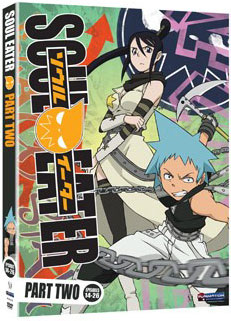
Anime Spotlight: Soul Eater
Part 2
Released by FUNimation
On a second, review focused, viewing of this set of episodes I noticed how many short cuts and how much short hand that bits of Soul Eater utilize. Simple sequences of animation get looped. Characters hover in dramatic poses. There's an instance in which a conversation takes place while the camera locks onto a hat resting on a white background. Yet, this is another Bones production. And, that studio has figured out how to make satisfying action anime. The bits with slack production still push the momentum, and when the animators really cut loose, the results are spectacular. It continues to please. The good bits are very good; the faults are muted; and, the disappointments are minor. There aren't that many superlatives rightly attributable to Soul Eater, but it is action anime at its peak. If you like the Shonen Jump classics, and especially if you enjoy Fullmetal Alchemist, Soul Eater is a must see.
Soul Eater manga creator Atsushi Okubo, like the other key shounen manga creators of his generation, such as One Piece's Eiichiro Oda, Naruto's Masashi Kishimoto and Bleach's Kubo Tite profess a deep admiration for Dragon Ball's Akira Toryama. Toriyama exercised an anything goes zaniness in pre-Dragon Ball work Dr Slump, a pop culture goof concerning robot girl Arale, and early Dragon Ball, before that one turned its attention to the overheated super-heroic bits that became the basis Dragon Ball Z anime. Dragon Ball for example started off as a parody of the Journey to the West Legend, with a blue-haired girl taking Buddhist monk Xuánzàng's place, but before long its Monkey King hero Goku was fighting Universal monsters and cyborg assassins.
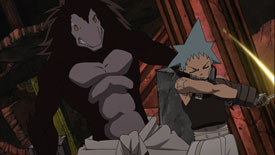
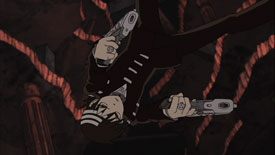
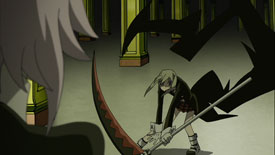
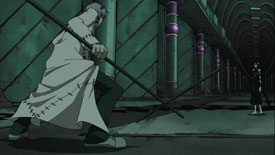
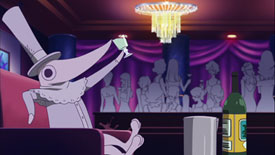

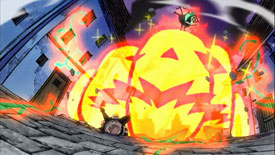
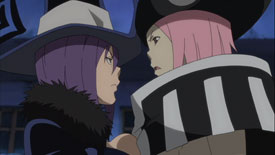
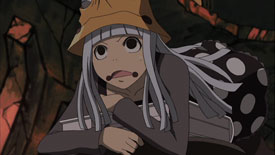
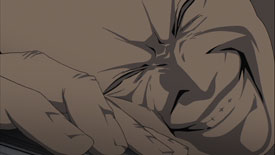
Episodes can also be seen on YouTube
Memorial service for Carl Macek
Those wishing to pay their respects to Robotech/Steamline's Carl Macek, who passed away on April 17th, may attend a memorial service on Saturday, May 1, 2010 at 2pm at
Congregational Church of the Chimes
14115 Magnolia Blvd.
Sherman Oaks, CA 91423
The service will be open to the public, but well wishers are asked to be mindful of Carl's friends and family. In lieu of flowers, donations to assist with memorial expenses should be made out to Svea Macek and sent to the following address:
Carl Macek Memorial
c/o Harmony Gold USA
7655 Sunset Blvd.
Los Angeles, CA 90046
Ain't It Cool News Animation RSS Feed











.jpg)
.jpg)
.jpg)
.jpg)